Ellis Island is much more than just an island off the coast of Manhattan. This iconic site was the gateway toAmerica for more than 12 million immigrants between 1892 and 1954. Today, it is estimated that over 100 million Americans are descendants of people who passed through this immigration centre. Located in New York harbour, this small island in the Hudson River embodies the very essence ofAmerica: a country built by men and women from all over the world seeking a new life in “the land of the free and the home of the brave”.
For any traveller wishing to understand the soul of New York and the United States, a visit toEllis Island is a must, a journey back in time to relive the arrival of those millions of people who shaped the face of modernAmerica.
The historic gateway to the American dream
The fascinating history of Ellis Island
Before it became the famous immigration centre we know today, Ellis Island was not the first gateway for immigrants to the United States. For around 35 years, it was Castle Garden in Battery Park that registered over 8 million immigrants. It was not until 1892 that Ellis Island officially opened its doors as a reception centre.
17 April 1907 marks a historic date in the annals of the island: on that day, no fewer than 11,747 people arrived at Ellis Island port, setting an all-time record. Throughout its history, the island has seen millions of people pass through, around 2% of whom were turned away for medical or other reasons. This is what earned the island its poignant nickname: “The Island of Tears“.
Ellis Island ceased to be an immigration centre in 1954. Eleven years later, in 1965, the island became part of the Statue of Liberty National Monument. An interesting historical detail: documents dating from before the summer of 1887 were unfortunately destroyed in a fire, representing a considerable loss for American immigration archives.
Ellis Island’s original infrastructure
At the time of its operation, Ellis Island was more than just a registry office. The island housed a whole complex of facilities needed to manage the constant flow of immigrants:
The main building, now turned into a museum, where all the administrative checks and procedures for new arrivals were carried out. It was in this imposing building that the fate of thousands of people was decided every day.
A hospital specially designed to treat sick arrivals, as health was a key criterion for admission to the United States.
Buildings reserved for people with contagious diseases, allowing them to be quarantined to prevent the spread of epidemics.
A huge dormitory to provide temporary accommodation for immigrants awaiting final admission or transfer to the continent.
The port of arrival for the boats, the first sight ofAmerica for these millions of people after weeks of crossing theAtlantic.
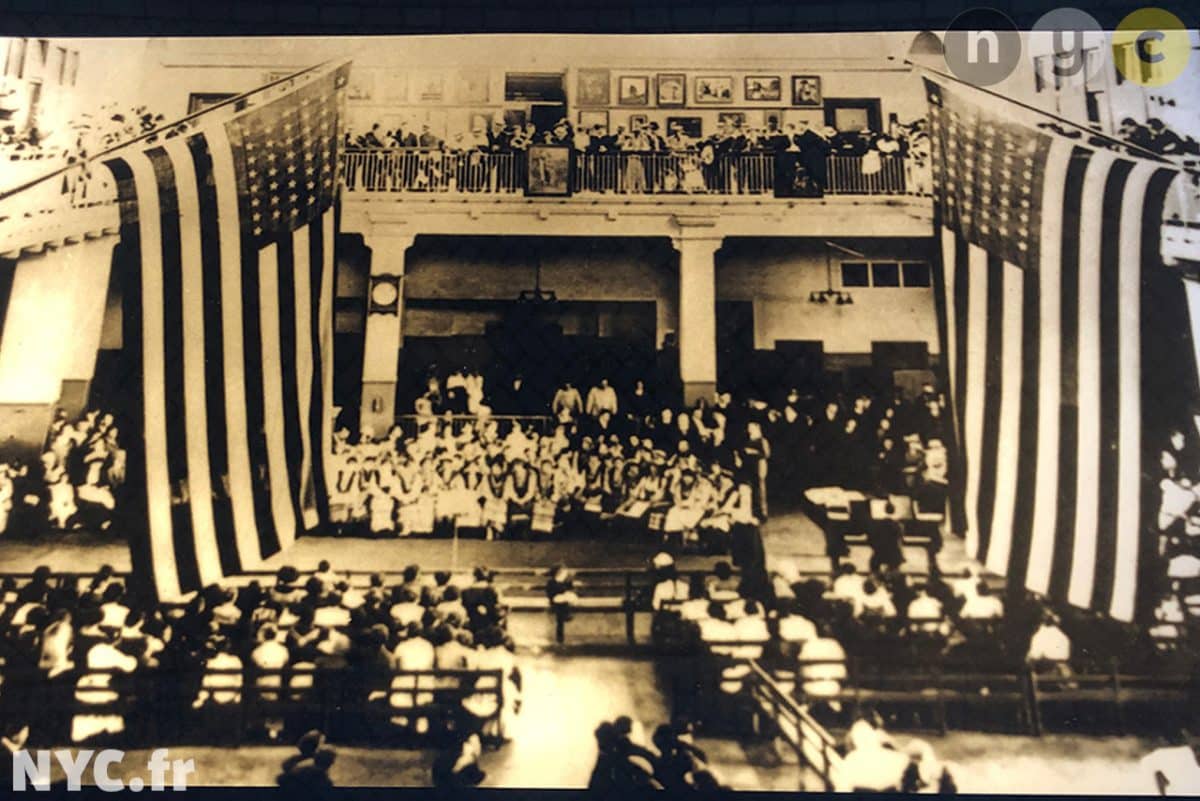
The National Immigration Museum: a journey through time
After decades of neglect, Ellis Island underwent a remarkable renaissance with the opening of the National Immigration Museum in 1990. Housed in the restored main building of the former immigration centre, this museum offers a total immersion in the history of the millions of men, women and children who left everything behind to try their luck in America.
The museum is spread over three floors of the main building and features an exceptional collection of period photographs, personal letters, everyday objects and administrative documents. Each exhibit tells a story, the story of an individual’s journey as part of the great collective story of American immigration.
Outside the building, don’t miss the ‘Wall of Honour’, an impressive wall inscribed with over 600,000 names of immigrants who passed through Ellis Island. For manyAmericans today, finding the name of an ancestor on this wall is a moment of intense emotion and a tangible connection with their roots.
One practical point to note: admission to the museum itself is free. The only charge is for the ferry to the island, making this visit exceptional value for money in a city where tourist attractions can quickly eat into a travel budget.


The ideal visit to Ellis Island
To make the most of your visit to Ellis Island, here’s a recommended itinerary that will get you the gist of the site, even if you only have 30 minutes:
Start at “The Baggage Room” on the ground floor, where immigrants deposited their meagre possessions on arrival.
Then move up to the Registry Room, a vast space where thousands of people waited, often for hours, for the immigration process that would determine their future.
Head for the West Wing, restored to look exactly as it did in the early 1920s. This is where you can follow the progress of the new arrivals step by step, and understand how the ‘undesirables’ were weeded out.
Don’t miss the opportunity to take the interactive tests that recreate the examinations that immigrants had to undergo: mental health tests, intelligence tests, etc. You’ll find out whether you would have been accepted or turned away according to the criteria of the time. Only able-bodied people who wanted to work and help build the American nation were allowed through the gates ofEllis Island.
Finish your tour by climbing up to the balcony overlooking the Registry Room for an overview of this impressive space. Take the opportunity to look at the historic photographs showing how the building has changed over the decades.
On the left-hand side of the balcony, don’t miss the reconstruction of the immigrant dormitories, which gives an accurate idea of the accommodation conditions at the time.
If you have more time, ideally allow a full three hours to peruse all the exhibits and fully immerse yourself in the atmosphere of the place.
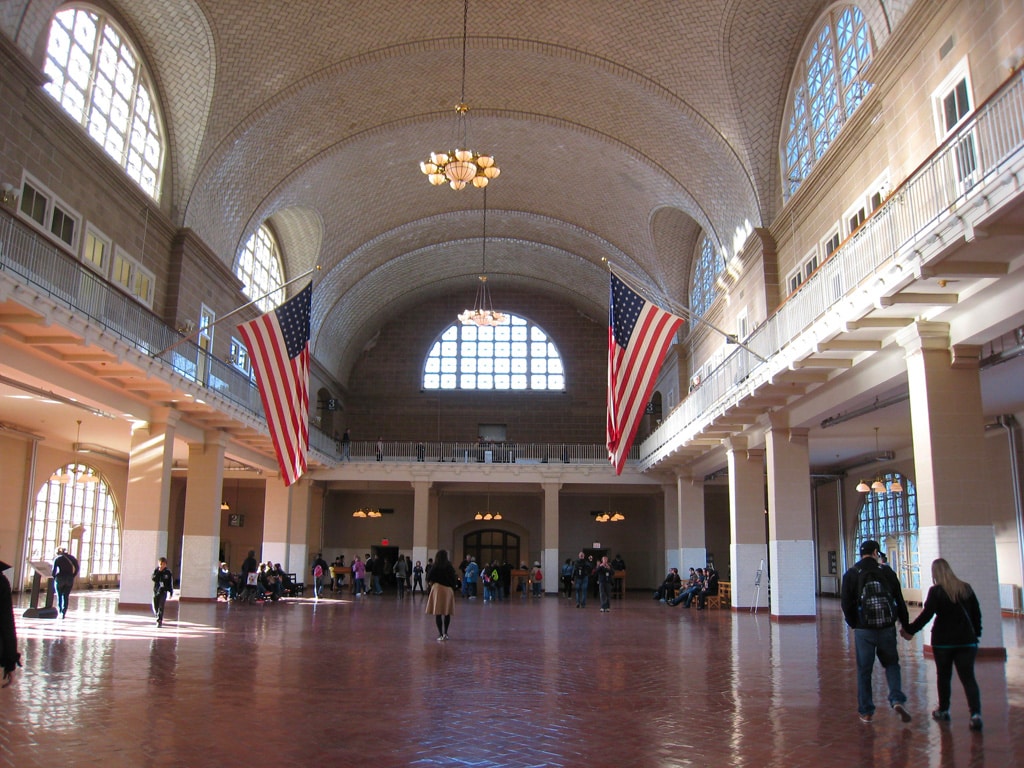
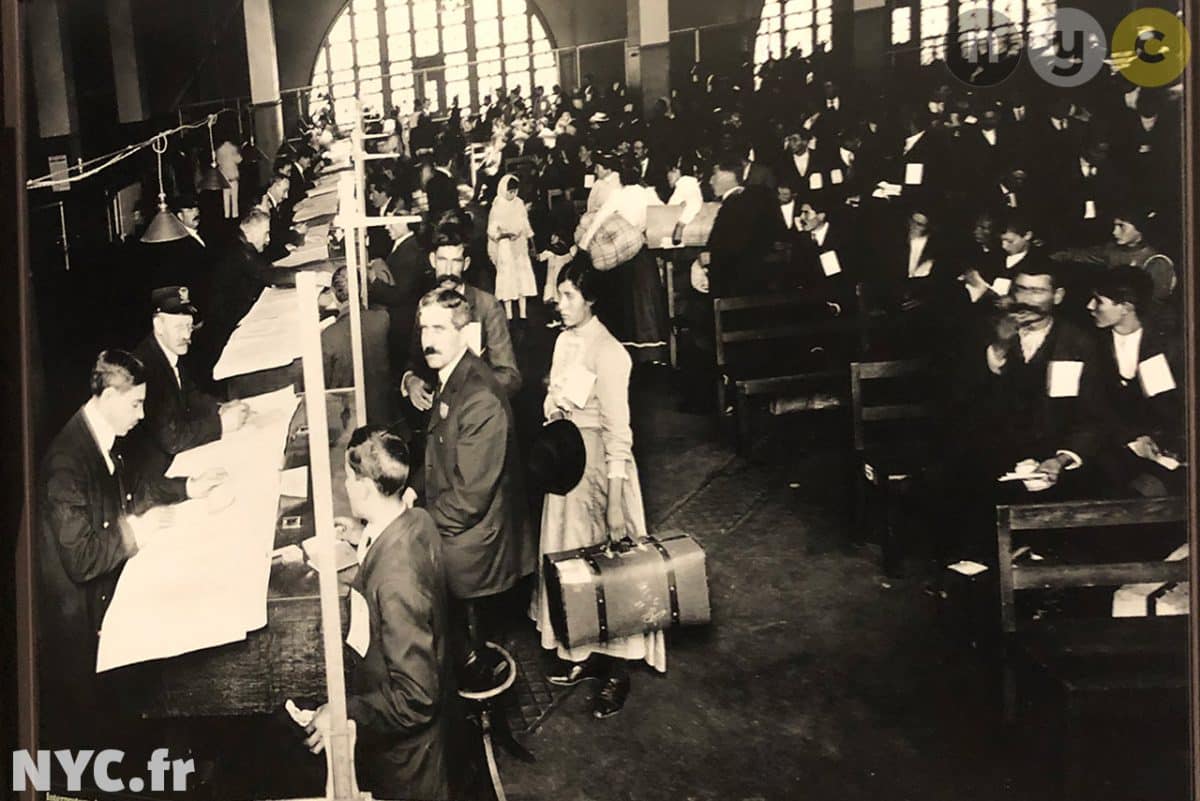
Guided tour options
To enhance your Ellis Island experience, there are a number of guided tour options available:
The National Park Service Rangers offer free guided tours of approximately 45 minutes in English. These passionate professionals share anecdotes and historical information that bring the walls of the building to life.
For French speakers, audioguides in French are available for hire, allowing you to follow the tour at your own pace while benefiting from detailed explanations.
If you want to make the most of your time and avoid the queues, opt for a guided walking tour with a queue-jump ticket. This more expensive option (around $69) not only includes priority access to the ferry, but also gives you an experienced guide who will tell you all about the history ofEllis Island, the Statue of Liberty and New York.

Practical organisation of your visit
Recommended tour route
Thebest order for your visit is to start at the Statue of Liberty and continue to Ellis Island. Ferries naturally follow this itinerary, making a loop with a first stop at Liberty Island before continuing on to Ellis Island.
A valuable tip: allow enough time for both sites. Many travellers underestimate the time needed to fully appreciate these two iconic monuments and end up having to cut short their visit to Ellis Island.
Be particularly careful about the times of the last ferry: visitors on the last ferry from the continent will only be able to visit one island, which would be a shame after making the trip.
Essential practical information
Ellis Island is located south-west of Manhattan, in New York harbour. The island is only accessible by ferry from Battery Park, at the southern tip of Manhattan.
There are several public transport options for getting to Battery Park:
- Underground: get off at South Ferry (line 1), Whitehall St/South Ferry (lines R and W) or Bowling Green (lines 4 and 5).
- Bus: take the M1, M6 or M15 which serve the area.
Ellis Island is open every day of the year, with the exception of Thanksgiving (late November) and Christmas Day (25 December).
There are specific ferry timetables to help you plan your day:
- First departure from the mainland: 8.30 or 9.00 am depending on the season.
- Last departure from the mainland: 3.30pm.
- Last departure from Liberty Island: 5pm.
- Last departure from Ellis Island: 5.15pm.
Departures are regular throughout the day due to the popularity of the site.
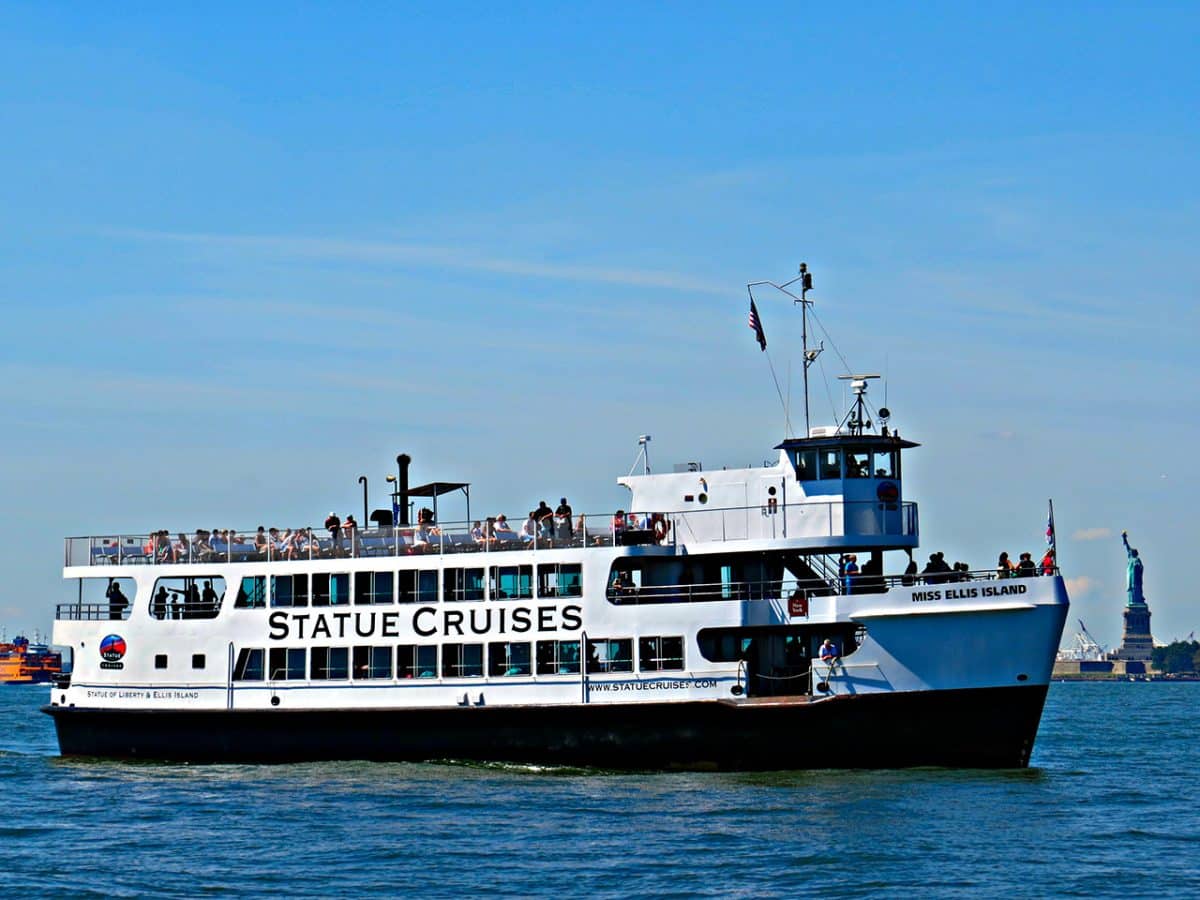
Fares and tickets
To visit Ellis Island, you will need to purchase a ticket for the ferry, which includes access to both islands(Liberty Island and Ellis Island):
- Adults: $32.50 (approx. €30)
- Children (aged 4-12): $23.50 (approx. €22)
- Seniors (aged 62 and over): $29.50 (approx. €27)
There are cheaper options if you plan to visit several attractions in New York: access to Ellis Island is included with the New York CityPass andExplorer Pass, and free with the New York Pass.
If you opt for a full guided tour with priority access, expect to pay around $69 (€64) per person.
Why Ellis Island is worth a visit
Ellis Island is not just another tourist attraction in New York. This major historic site reflects themulticultural essence of the United States and offers a unique immersive experience in a place where “it all began”.
To visit Ellis Island is to understand the deep roots of the American nation, to follow in the footsteps of millions of men and women who crossed the ocean in the hope of a better life. The museum offers a unique vision of American history through the prism of immigration, and allows visitors to explore the importance and impact of these migratory flows on today’s society.
An ideal complement to a visit to the Statue of Liberty, Ellis Island gives you a deeper understanding of the founding values of the United States and the contribution made by immigrants to the building of the country.
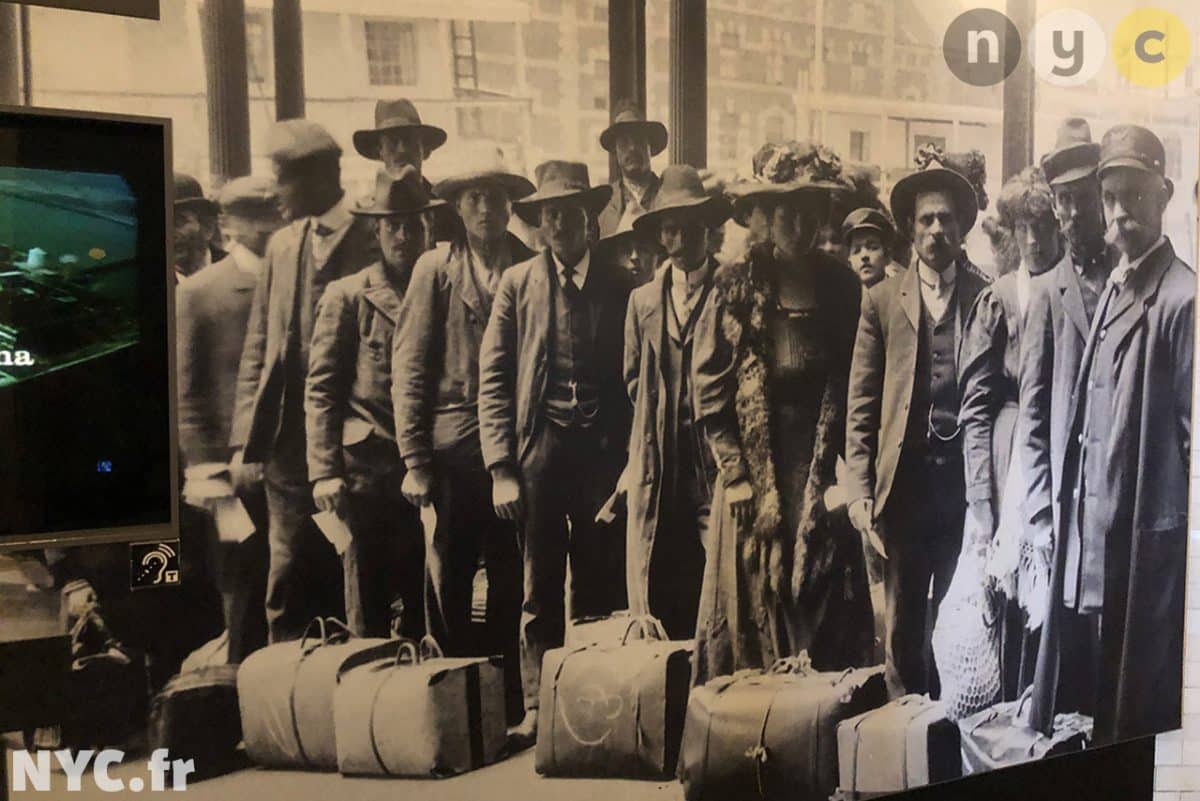
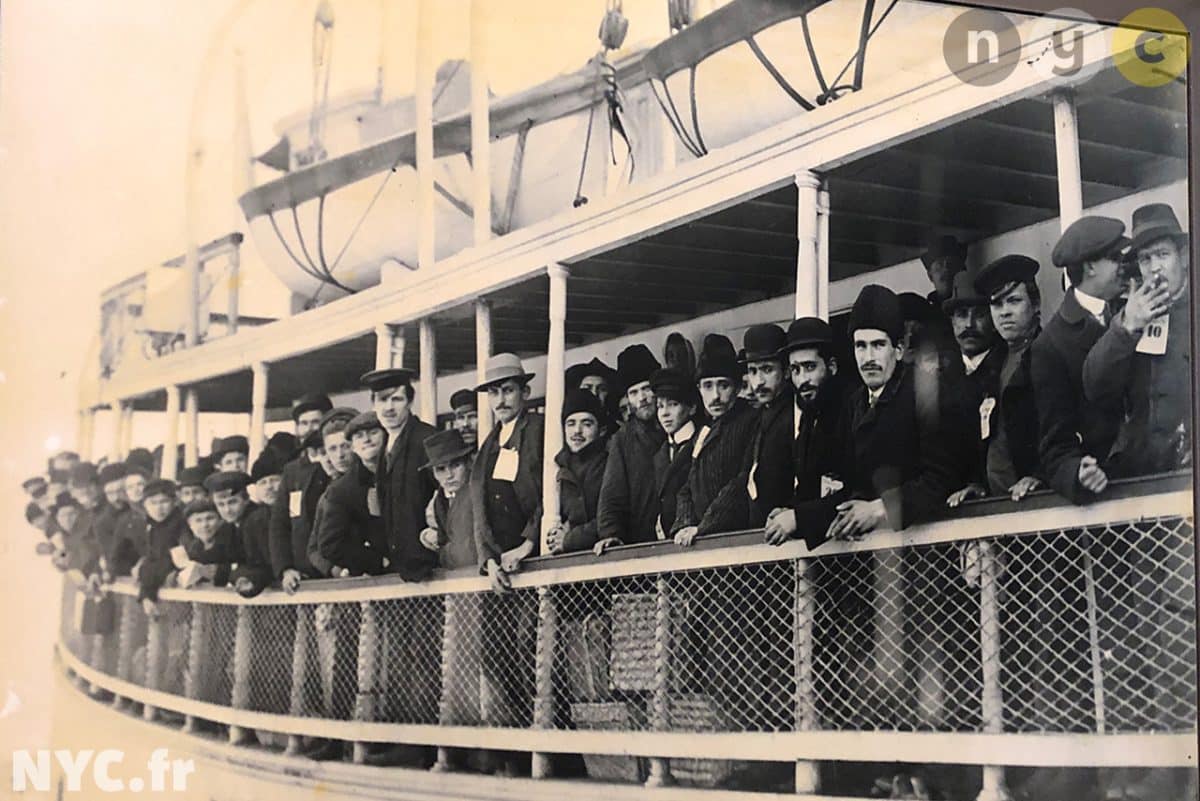
Practical tips to make the most of your visit
To make the most of your day at Ellis Island, here are a few practical tips:
Allow plenty of time: at least 30 minutes if you’re in a hurry, but ideally 3 hours for an in-depth visit. Don’t forget to add the time needed for the Statue of Liberty and the ferry crossings.
Buy your tickets in advance, online, to avoid the long queues that can form at Battery Park, especially in peak tourist season.
Opt for a guided tour if you want more historical information and anecdotes that may not appear on the explanatory panels.
Take ferry timetables into account when planning your day and avoid arriving too late to visit both islands.
If you are keen on genealogy or have ancestors who passed through Ellis Island, allow extra time to consult the databases available at the museum.
It’s best to visit on weekdays and outside the American school holidays, to enjoy the site with fewer crowds.
Ellis Island: a living memory of American immigration
To visit Ellis Island today is to take a journey through time and the history of millions of individual destinies which, together, have shaped modernAmerica. It is to understand how this small island served as a gateway to a new world for people from the four corners of the globe.
The National Immigration Museum at Ellis Island is much more than just a tourist attraction: it is a place of memory, a poignant testament to the history of American immigration and a symbol of America’s founding multiculturalism.
Whether you’re a history buff, looking for your family roots or simply curious to understand the foundations of American society, Ellis Island will provide you with a memorable and enriching experience. This island, once a stopover for millions of immigrants, is now a must-see for any traveller wishing to capture the very soul of New York and the United States.


